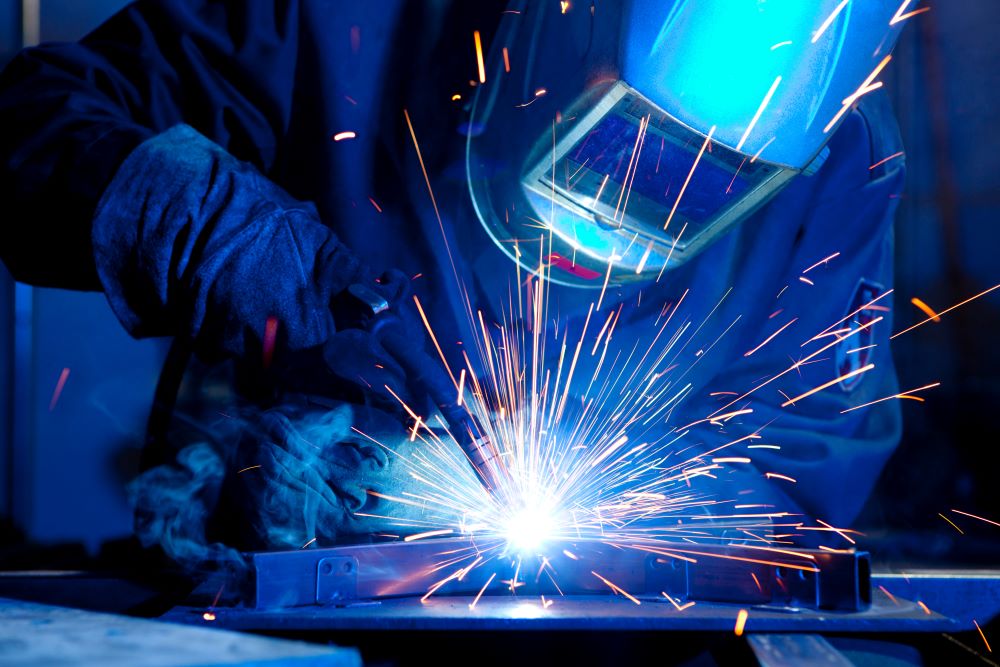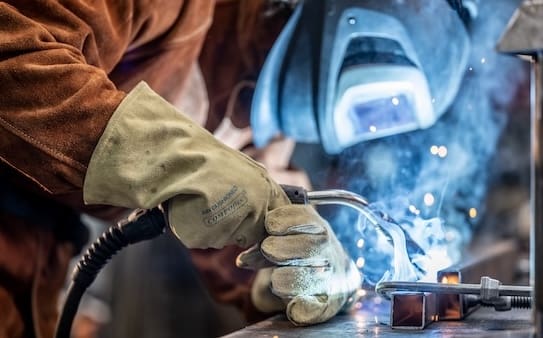Common problems explained and solved by Montana Mobile Welding and Repair Belgrade Fabrication
Everything about Welding: Trick Insights Into Techniques and Ideal Practices for Success
Welding incorporates a selection of strategies, each matched for details products and applications. Recognizing these approaches, such as GMAW, SMAW, and TIG, is crucial for attaining excellent results. The right tools and safety methods can not be forgotten. As prep work and troubleshooting play crucial roles in the welding process, understanding these components can considerably boost the top quality of the last product. What are the essential factors that assure a successful weld?
Understanding Various Welding Methods
Welding techniques incorporate a range of methods, each matched to details applications and products. Amongst one of the most typical methods are Gas Metal Arc Welding (GMAW), Secured Steel Arc Welding (SMAW), and Tungsten Inert Gas Welding (TIG) GMAW, also called MIG welding, is prominent for its speed and convenience, making it ideal for slim materials. SMAW, or stick welding, is preferred for its simplicity and performance in exterior atmospheres, particularly with thicker steels. TIG welding provides accuracy and control, making it appropriate for intricate job and non-ferrous metals (Montana Mobile Welding and Repair Belgrade Welding). Each method has its special advantages and considerations, allowing welders to pick the very best approach based on the job's needs, product kind, and wanted outcomes. Recognizing these techniques is crucial for successful welding
Important Welding Tools and Devices
While numerous welding techniques require specific abilities, the best devices and tools are just as vital for attaining top quality results. Crucial welding equipment includes welding makers, which differ relying on the strategy-- such as MIG, TIG, or stick welding. Protective gear, including helmets, gloves, and aprons, guarantees safety and comfort during the procedure. Furthermore, clamps and components assist protect products in position, making certain precision in welds. Consumables like welding poles, cable, and securing gas are likewise vital elements that affect the high quality of the weld. Tools such as cutters and mills help with surface prep work and post-weld completing, contributing to a specialist end result. Investing in high-grade devices eventually enhances the performance and efficiency of welding projects.
Safety And Security Practices in Welding
Correct security methods are crucial in the welding market to safeguard employees from prospective risks. Welders must put on ideal personal safety devices (PPE), including helmets with correct shading, gloves, and flame-resistant apparel. Appropriate air flow is essential to minimize direct exposure to harmful fumes and gases produced during the welding process. Furthermore, workers ought to be learnt the correct handling of welding devices to avoid crashes. Fire precaution, such as keeping combustible materials away from the welding location and having fire extinguishers readily offered, are required. Regular assessments of equipment and work areas can help recognize prospective threats prior to they result in mishaps. By adhering to these safety methods, welders can develop a more secure working atmosphere and decrease risks related to their trade.
Readying Products for Welding
Preparing products for welding is an important action that greatly affects the high quality and stability of the last item (Montana Mobile Welding and Repair Fabrication). Appropriate preparation includes cleansing the surfaces to get rid of pollutants such as rust, dust, and oil, which can compromise the weld. Techniques such as grinding, sanding, or making use of solvents are frequently used to achieve a tidy surface area. In addition, making certain that the products fit with each other well is necessary; voids can cause weak welds. It's likewise crucial to take into consideration the positioning and positioning of the components, as this will certainly influence the convenience of welding and the last end result. Ultimately, selecting the proper filler product and ensuring compatibility with the base steels is important for achieving solid, durable welds
Tips for Achieving High-Quality Welds
Accomplishing top quality welds calls for attention to detail and adherence to finest practices throughout the welding process. Correct joint preparation is important, making certain surface areas are complimentary and clean from contaminants. Choosing the suitable filler material and welding method based upon the base steels is important for ideal bonding. Preserving regular traveling rate and angle while welding can protect against flaws and advertise uniformity. In addition, controlling warm input is important; excessive warmth can result in warping and compromised joints. If required, on a regular basis examining the welds throughout the process permits for instant modifications. Utilizing proper post-weld therapies, such as cleansing and anxiety relief, can improve the longevity and honesty of the weld, inevitably ensuring a successful result.
Fixing Typical Welding Issues
Welding usually presents obstacles that can influence the high quality and stability of the end product. Common issues such as porosity, inconsistent weld grains, and getting too hot can develop, each calling for specific repairing techniques. Comprehending these problems is crucial for welders to boost their skills and achieve ideal outcomes.
Porosity Issues Explained
Although porosity can frequently be neglected, it continues to be an essential issue in welding that can endanger the integrity of an ended up item. Porosity refers to the existence of small gas pockets within the weld grain, which can compromise the joint and lead to premature failing. This trouble commonly arises from contaminants, wetness, or improper securing gas coverage during the welding procedure. To mitigate porosity, welders need to validate that the base products are tidy and completely dry, utilize proper shielding gases, and preserve regular welding parameters. Frequently checking the equipment and atmosphere can additionally help recognize potential concerns before they show up in the weld. Attending to porosity successfully is necessary for accomplishing strong, long lasting welds that fulfill quality criteria.

Irregular Weld Beans
Inconsistent weld grains can substantially influence the high quality and stamina of a completed item. Different variables add to this problem, including improper travel rate, wrong amperage settings, and irregular electrode angles. When the welder moves too promptly, a grain might appear narrow and lack infiltration, while relocating too slowly can cause too much accumulation. In addition, using the wrong amperage can cause these details either undercutting or excessive spatter, both of which concession weld integrity. The welder's technique, such as irregular torch motion, can also cause uneven grain look. To minimize these troubles, welders ought to concentrate on maintaining constant, controlled motions and making sure proper devices setups to accomplish harmony in their welds. Consistency is vital to achieving solid and reputable welds.
Overheating and Warping Issues
Too much warmth during the welding procedure can lead official website to significant getting too hot and deforming issues, impacting the architectural stability of the work surface. These problems typically materialize as distortion, which can endanger alignment and fit-up, making additional assembly testing. Variables adding to overheating consist of the option of welding specifications, such as voltage and travel rate, along with the sort of product being bonded. To alleviate these concerns, welders should keep regular traveling speed and proper warmth input while keeping track of the workpiece temperature level. Furthermore, pre-heating or post-weld warm therapy can assist reduce tensions triggered by quick air conditioning - Montana Mobile Welding and Repair Belgrade Welding. Normal inspection and adherence to ideal practices are necessary in avoiding overheating and ensuring the long life and dependability of bonded frameworks
Regularly Asked Inquiries
What Are the Occupation Opportunities in the Welding Market?
The welding market uses diverse career opportunities, consisting of positions as welders, engineers, examiners, and instructors. Experts can function in manufacturing, construction, aerospace, and auto markets, taking advantage of solid demand and affordable incomes in various duties.
How Can I Boost My Welding Rate Without Sacrificing Top Quality?
To improve welding rate without sacrificing top quality, one ought to exercise effective strategies, preserve equipment, maximize setups, and enhance hand-eye control. Routine training and looking for feedback can likewise significantly contribute to attaining quicker, high-quality welds.
What Qualifications Are Offered for Welders?
Various qualifications exist for welders, including those from the American Welding Society (AWS), the National Facility for Construction Education and Research Study (NCCER), and various read more industry-specific organizations. These credentials improve employability and demonstrate ability proficiency.
Just How Does Welding Affect the Characteristics of Metals?
Welding affects the residential properties of steels by modifying their microstructure, which can result in modifications in ductility, hardness, and stamina. Heat input and cooling prices throughout the process substantially affect these material attributes.
Can I Bonded Dissimilar Metals With Each Other?
